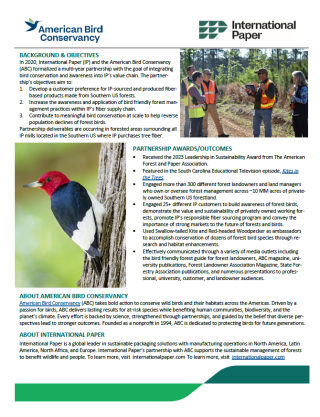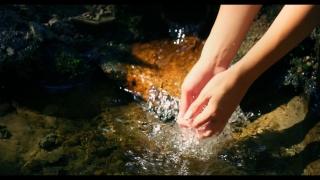Forestland Stewards Partnership helps give gopher tortoises head start
The best way to celebrate Gopher Tortoise Day is to ensure there are more gopher tortoises across their natural range in the southeast. The Forestland Stewards Partnership between the National Fish and Wildlife Foundation (NFWF) and International Paper, founded in 2013, provides conservation grants to restore and conserve gopher tortoise populations and longleaf habitat.
Helping gopher tortoises to thrive isn't just good news for tortoises; it also means good news for hundreds of other species that depend in big and small ways on the tortoise in its role as a keystone species. “They are called a ‘keystone species’ because more than 350 other animals — like owls, snakes, foxes, toads, skunks, and lizards — use gopher tortoise burrows to shelter from the heat, fires, and predators,” says Kurt Buhlmann, Senior Research Associate at the University of Georgia’s Savannah River Ecology Laboratory. Gopher tortoises spend most of their lives in burrows that can be more than 20-feet long and eight-feet deep.
Forestland Stewards Partnership grants are helping gopher tortoises and their habitat by supporting collaboration between The Longleaf Alliance, the University of Georgia’s Savannah River Ecology Laboratory, and the South Carolina Department of Natural Resources. These organizations are augmenting and restoring gopher tortoise populations through a technique called “head-starting.” About 350 eggs have been collected from wild populations to hatch in captivity. Hatchling tortoises are reared indoors for one year to achieve larger body sizes than would occur naturally, and thus become more resistant to predation. This gives tortoises a greater chance to survive, and eventually become subadults.
Head-starting increases survival
“Hatchling tortoises have naturally low survival in the wild. Raccoons, coyotes, and other predators often eat tortoise eggs and hatchlings, and mortality rates can be as high as 95%,” says Lisa Lord, Conservation Programs Director at The Longleaf Alliance. “The head-started juveniles are about a year old — but the size of wild 3-to-4-year-olds — when released back into well-managed longleaf pine habitat. The juveniles are released in a 1.5-acre pen to minimize wandering, help establish fidelity to the site, and increase their chances of staying in the area when the pen walls are removed.”
Gopher tortoise habitat covers the coastal plain from South Carolina through Florida to southeastern Louisiana, mostly in longleaf pine savanna habitats. The gopher tortoise is federally listed as threatened under the Endangered Species Act (ESA) in the western portion of its range (from Louisiana, east to the Mobile River in Alabama).
The U.S. Fish and Wildlife Service, the agency responsible for assessing the potential listing of species as threatened or endangered under the ESA, issued a decision in October 2022 announcing that the eastern population of the gopher tortoise (east of the Mobile and Tombigbee rivers in Alabama, Georgia, Florida, and South Carolina) did not warrant federal listing as threatened. The agency cited the collective work of the U.S. Fish and Wildlife Service and other federal agencies, state agencies, nongovernmental organizations, and private landowners to restore, maintain, and protect longleaf pine habitat and head-starting efforts like the one in South Carolina as contributing to their decision.
Private landowners help gopher tortoises by caring for longleaf pine habitats, including by using prescribed burning
Longleaf pine forests and savannas are fire-adapted, meaning they depend on periodic burning to thrive. They also make up one of North America’s most biodiverse forest ecosystems and are home to countless rare species, especially when they have open canopies and diverse ground cover. Longleaf pine once covered an estimated 90 million acres across the southeast but now covers only about 5.2 million acres. The diminished forest is a significant contributor to the decline in gopher tortoise populations.
The decline in longleaf pine forests means the other critical piece supporting the head-start program is having enough restored longleaf habitat for the gopher tortoise to return to. More than 80% of potential tortoise habitat is privately owned, with the rest controlled by local, state, federal, or conservation organizations.
“We have educational and cost-sharing programs to help landowners restore and conserve the longleaf pine ecosystem, which also helps gopher tortoises. A big focus is teaching landowners to use prescribed burning, which also maintains the ground cover that tortoises need to thrive,” Lord says.
The Longleaf Alliance’s Longleaf Academy Program prepares private landowners and natural resource professionals to manage, restore, and enhance longleaf pine ecosystems through techniques like prescribed fire. The Academy Program includes Fire and Longleaf 201, a three-day course that teaches people how to maintain their longleaf stands with fire.
Coming together for the gopher tortoise
Improving and sustaining gopher tortoise populations takes a multi-faceted approach — from restoring and maintaining longleaf habitat with prescribed fire to giving young tortoises a head-start in the wild. The efforts of partners like The Longleaf Alliance to rally public agencies, private organizations and landowners around this important work is critical to ensuring the gopher tortoise and the many other species that live in the longleaf pine ecosystem can thrive.
Learn more about the Forestland Stewards Partnership and The Longleaf Alliance.


